-
Courses

Courses
Choosing a course is one of the most important decisions you'll ever make! View our courses and see what our students and lecturers have to say about the courses you are interested in at the links below.
-
University Life
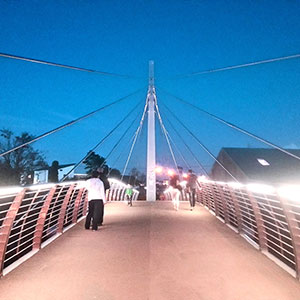
University Life
Each year more than 4,000 choose University of Galway as their University of choice. Find out what life at University of Galway is all about here.
-
About University of Galway
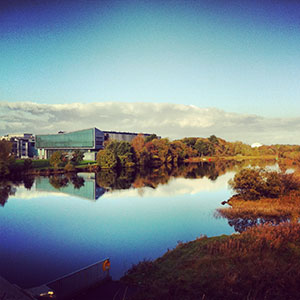
About University of Galway
Since 1845, University of Galway has been sharing the highest quality teaching and research with Ireland and the world. Find out what makes our University so special – from our distinguished history to the latest news and campus developments.
-
Colleges & Schools
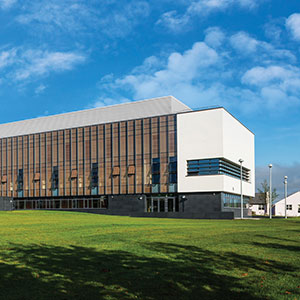
Colleges & Schools
University of Galway has earned international recognition as a research-led university with a commitment to top quality teaching across a range of key areas of expertise.
-
Research & Innovation

Research & Innovation
University of Galway’s vibrant research community take on some of the most pressing challenges of our times.
-
Business & Industry
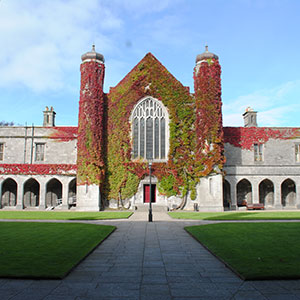
Guiding Breakthrough Research at University of Galway
We explore and facilitate commercial opportunities for the research community at University of Galway, as well as facilitating industry partnership.
-
Alumni & Friends
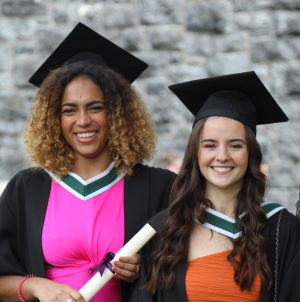
Alumni & Friends
There are 128,000 University of Galway alumni worldwide. Stay connected to your alumni community! Join our social networks and update your details online.
-
Community Engagement
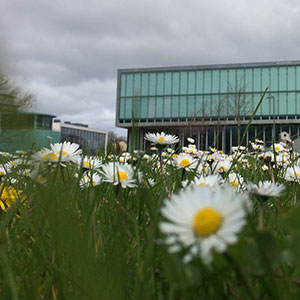
Community Engagement
At University of Galway, we believe that the best learning takes place when you apply what you learn in a real world context. That's why many of our courses include work placements or community projects.
Related Projects
'History Lesson' by Elaine Feeney
A poem taken from 'Rise' (2017) - the third full poetry collection from award-winning author and poet Elaine Feeney.
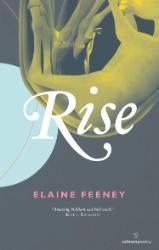
The Stone Age began around 10,000 years before Jesus came and made the Christians. There were others too. Gods. Ages. Stones.
In 2010 a man tells me I shouldn’t wear purple tights if I want to be school middle management.
It’s all about impressions and right now you’re giving off a purple kind of flowery one.. Same with having tattoos and piercings and rotten teeth.
I keep the purple tights on my curved legs. I have no rotten teeth. He keeps power. He has a mouth of silver fillings.
My mother was born in a three bed terrace in 1955. She wanted to be the cowboy with a cap gun on the Mervue streets on a sleety Christmas Day.
She wasn’t mad about the Indians.
She never knew her history and now it drives her mad.
She’s a furious reader.
Taught me to be a furious reader.
Read us endless stories that matched our birth dates.
They were my favourite, her voice growing tired.
People began to farm and lay down roots and make cheese and they say the first farm men were very clever men, knew how to balance staying beside the sea and not getting wet.
My Nana brings digestive biscuits into a London air raid shelter night after night, somewhere near St. Thomas’ Hospital, she said.
She calls her first son, Thomas. My Father.
He teaches me three things:
Always drive into skid marks on an icy road.
He is the most important person in the world.
And when I’m not a cunt, I’m not too bad, all things considered.
Nana is glad of the break from slopping out shit buckets in the hospital. She’s not a hundred per cent sure who’s dropping bombs on her, but she likes the evening company. They sing songs. She loves to sing.
Her mother died when she was four from a burst appendix and so she’s never been very sure of anything since except how she loves to sing and how very tall and handsome her father was. Or so she said. She liked to drink brandy and smoke the odd cigarette.
I spent one full hour convincing some friends that women said poems in Ireland before Eavan Boland but the women friends are suspicious. They have English degrees.
It’s difficult to remember who first sailed around the Cape of Good Hope or of Storms, Diaz or Da Gama? But man’s stealing stuff takes a Frankensteinian turn. Or at least now some ass is keeping a logbook of all the bastarding things we can do to others.
This would appear to be a good thing.
Silk and spice being basic human needs, like diamonds and bread and the Internet and hoarding.
We can say for sure that Magellan proved the world was round even if once:
A woman is laying under a sycamore tree and watches a dappled grey horse gallop towards her its steely long legs appear all of a shot, not making sense. She is a long time pregnant, her nipples thick and dark. Soon she will give birth, she knows the earth is round as she sees the horse suddenly appear over her large belly. It is all too sudden. It must be round like a ball.
And besides, Magellan died through his experiment.. But this is just a technicality.
She keeps this information to herself. She doesn’t believe in the many of their any gods, and she doesn’t want to die for knowing stuff.
Christopher Columbus was a Great Man.
In the small salmon bedroom of her terrace house, they put chloroform over my other Nana’s nose on her ninth or tenth child. This child survives. She is so thankful for not losing another son. Do your duty. You must do your duty. He’s huge, really huge for such a tiny woman.. It was sometime in the sixties, but she’s not too sure. She was collapsed, she tells me.
Skip through Martin Luther, Jean Calvin, go straight to the Jesuits. We are all Roman Catholic. It says it on the school door. We’ve cleaned up ‘the abuses’ with PR machines as immovable as Croagh Patrick. We can ruin you in this town. Protestantism allowed a randy king marry a younger woman, stands for nothing but leaving your toaster out on the sink.
There was never really a Civil War in Ireland. A few brothers had a fight, down in Cork or West Cork, or actually I think it was Mayo. Give it five minutes class coverage at most. Actually I don’t think you need to teach it at all, there’s confessions that day.
Michelangelo, Petrarch, Raphael, Durer, now they were all great men. I could go on. And on. And on. And I will.
2015 is the first year I read a comprehensive list of female renaissance artists, Sofonisba Anguissola was a friend of Michaelangelo. Bet he copied her.
The Industrial Revolution was a great time, lots of great inventions, made great by the Agricultural Revolution, lots of food to make the men great.
Many women worked in the factories, I don’t know their names. They only teach about a Spinning Jenny. And I think this is named after an ass.
In 2007 a doctor tells me I have a brain clot. I am pregnant with my second child. I ask him of the option of a termination. He tells me that I will change my mind when I am a mother. ‘I am a mother now,’ I say.
I heard three women’s names mentioned in my History Class. Nano Nagle, Constance Markievicz and Mary Robinson. I try to imagine what they would do.
My first boyfriend punched me seven times on Shop Street and we ended up in the hospital because he puts his fist through the window of a shop my uncle works in (bad coincidence). But I am in terror in case anyone has watched it and recognized me. The shame.
In 1927 women are banned from sitting on Juries in Ireland. History Lessons: In 1935 contraception is banned in Ireland.
The hospital staff give me a card for domestic violence abuse victims. I am embarrassed at how little they know about me, and how much I raise a man’s temper. (And my poor ability to mind my men.) I put the card in the bin and withstand another year for love. I cannot mind my men. I keep this secret. But For now. I think of Mary Robinson and the stronger women in history again. I feel bad.
It will take a decade before I realise I do not rise temper in anyone. They rise all by themselves. This should be our first lesson.
Mussolini’s rise to power was made easy by the colour of their shirts, the communists, the Treaty of Versailles and his March on Rome.
The 1916 Rising was neither a rebellion nor a revolution; it was a thing apart entirely. It was a glorious thing, with god and glory.
And look at us all now.
I ask my class why 1916 makes them happy.
They tell me it’s better than being fucking English. Although a few of them are also English, but they like being Irish too.
The men often signed the Solemn League and Covenant in blood.
I have never taught with an openly gay teacher.
Medieval times meted out some cruel punishments, most of which are still being perfected and used in the world today. Though most kids will come away thinking knights are cool and castles had great shooting windows and the past is the past and the Enlightenment, oh how enlightened it made us all. Particularly the men, who in turn could choose what to do with enlightening the women.
Savita Halappanavar dies in October 2012. I cannot stop crying.
It’s 2017 and my London-bombing Nana is dead and my Salmon-bedroom-small-terrace Nana is trying very hard to remember.
_________________________________________________________
DeValera’s Ireland: Art Therapy Project
DeValera’s Ireland was written and voiced by Seamus Ruttledge. It was facilitated, recorded, and arranged by Padraig Stevens.
The artists wish for their work to be published alongside the Tuam Oral History Project as it is survivor led and a creative response to life in a Mother & Baby institution, inspired by the artistic community in Tuam.
About the Project – A note from the artists
DeValera’s Ireland is an audio art therapy project created by Seamus Ruttledge and Padraig Stevens that attempts to honour the unheard voices from dark times in Irish history for unwed Mothers and their Children. It is also an exploration of memory, using purely artistic forms. In this art therapy project poetry, song, music, and biography of place are used to retrieve lost memory. It is a journey into a world of shadows for the purpose of revealing lost and unexpressed parts of the self, to help create a healing space.
While Seamus Ruttledge has written poetry and spoken word pieces over many years, about the orphan life and the legacy of life in religious institutions, it was a chorus from a song that Padraig Stevens was writing called Listen to The Lives of the Little Ones that set the tone for DeValera’s Ireland. It was a motivation to write this project and give voice to the child Joseph McEvey.
The title DeValera’s Ireland was chosen to allow this difficult subject-matter to be framed in an historical context. The reason to do the audio art therapy project and tell the story through strictly artistic forms, was to allow people listen to “the lives of the little ones” in non-judgemental language.
The artistic disciplines of poetry, spoken word, and song, seemed the best tools to allow this to happen.
More Information
Inspiration and Ackowledgements
Seamus Ruttledge’s poetry and spoken word pieces comprise the body of this project and is complemented with extracts from Pat Tierney’s The Moon at My Back - as well as chorus lines from Listen to the Lives of the Little Ones, Orphan Boys and Orphan Girls, and the Bunators Special by Padraig Stevens.
Maigh Seola contributed the beautiful Suantrai Lullaby to Part 3 of DeValera’s Ireland, called Hymn to a Mother. The ancient melody Rolling Home to Dear Old Ireland was played by Leo Moran. It was recorded by Padraig Stevens on the site of the Tuam Mother & Baby Home on St. Patrick’s Day 2021.
We are also grateful for help and assistance from poet Theo Dorgan, from Ray Corcoran, and from Ray Bates at the Dublin City Arts office. Thanks to Theo Dorgan for directing us to the publishers of Austin Clarke’s poem The Planter’s Daughter and we are indebted to Michael Schmidt from Carcanet Press, Manchester, UK for permission to use The Planter’s Daughter.
Theo Dorgan was also very helpful on the background to Pat Tierney’s poetry readings on Grafton St and his community work in Ballymun in the 1980s. We would also like to thank broadcast journalist and producer Maud Hand for her valued advice and guidance with the project - and also a big thank you to our friend, the Westport-based journalist Liamy McNally for pointing us in the right direction.
This Audio Art Therapy Project was produced by Seamus Ruttledge and Padraig Stevens.
The artwork/graphic design for DeValeras Ireland is by Michael O’Dwyer at factoryedgedesign.
The Creative Community in Tuam
By Seamus Ruttledge
When I first came across singers singing their own songs in Tuam it was a sort of epiphany for me. The musicians I met were all able to sing their own songs and tell their own stories about local things that had, or were happening. They sang songs about the lives of local people. Some of these people and places I saw right before me in the normal everyday of life in Tuam.
The musicians were part of the Town’s loose unassuming arts community. This arts community in Tuam was also peopled by actors and directors from a vibrant amateur theatre scene that was central to Tuam social life since the early sixties.
They were always putting on the plays of the Tuam born playwright Tom Murphy, who was internationally acclaimed and celebrated.
Going to see these plays put on in Tom Murphy’s home town where the language of his plays and much of the subject matter originated, was a revelation to me.
As is well known Tom Murphy’s plays were based on the experiences of real people trapped in social situations in a closed society dominated by the clergy, and the harshness of the lives they lived.
It was revealing to listen to people in Tuam talk about Murphy as local and point out the physical places and the people that may have inspired Tom Murphy’s writing. It confirmed the adage that you should “write about what you know” and your own life and experiences.
This same down-to-earth and unassuming arts community were instrumental in my own journey of discovery into the life of the young orphan boy named Joseph McEvey.
They always encouraged me in my early attempts at song writing and also my attempts at writing a form of verse or poetry of self-discovery.
Witnessing first hand these artists and musicians do their work in such an accepting and unassuming manner allowed me to open up and talk about the institutional regime and life in Lenaboy orphanage as a ‘secret child’(orphan) - and do it through poetry and song.
These early forms of artistic expression that were encouraged and nurtured by my association with the Tuam arts community opened up a way for me to give expression to difficult things that were not easy to talk about. This acceptance was new to me and to my life and it proved to be a form of salvation.
When I wrote a poem called The Secret Child, the musicians and songwriters of Tuam gathered round me and helped me to record The Secret Child as a song, as well as recording Without A Full Moon, Orphan Child, and other songs about the orphan life, both within and beyond the institution.
This to me was art working as therapy. It was a concrete example of art serving a purpose and opening a way to express the inexpressible, the difficult, and the dark things that had occurred.
The Secret Child appeared on my first album New Boots New Shoes. The album was recorded with contributions and help from the wider community of Tuam’s musicians and songwriters. They have all continued to help and support me. This would not have happened in any other place I know but Tuam.
The acceptance and the compassion of the Arts Community in Tuam allowed me to move from feelings of anger, despair, and inadequacy to a place of dignity and self-worth. I was now creating my own art and expressing myself through an understandable language that emerged as artistic forms I found a more positive and meaningful way to deal with the long term emotional, mental, and physical affects of early childhood years spent behind the high grey walls of Lenaboy orphanage and trying thereafter to live a normal life with the stigma of being labelled an illegitimate child.
I am indebted to Tuam’s Arts community.
Sleeve Notes: Introduction to the Audio
Part 1 - acts the an awakening to the subject and the times it occurred. This represents the heard voices of the people with power; the clergy, the politician, and the state. The only voices heard in “this stilled silent land”
Part 2 - opens again with the heard voices of authority and power. The chorus ‘Listen to the Lives of the Little Ones’ brings the listener inside the walls of the institution and the different unheard voices of the incarcerated children locked behind “high grey walls”.
Part 3 - is a requiem for the Mothers who were institutionalised and forced to give up their babies. It represents the whispering voices of the unheard, seeking truth and justice against the loud voices of condemnation and retribution.
Copyright
De Valera’s Ireland copyright Seamus Ruttledge and Padraig Stevens 2021.
The project represents the artists’ unique perspective and may contain subjective interpretations that do not necessarily reflect the views or opinions of the University of Galway. Visitors to this website are encouraged to engage with the content critically and appreciate it as a form of artistic expression.















